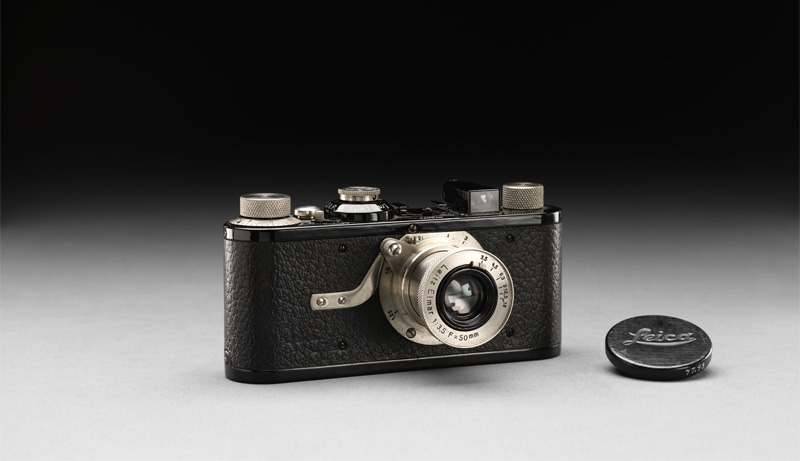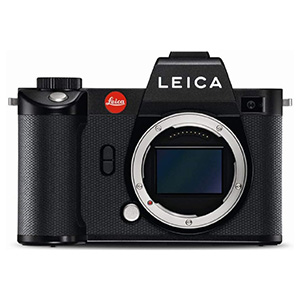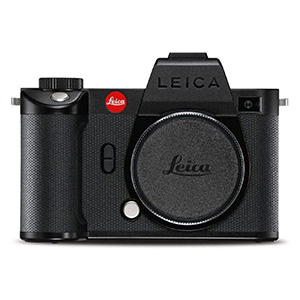As an affiliate, we may earn a commission from qualifying purchases. We get commissions for purchases made through links on this website from Amazon and other third parties.
The finest Leica cameras are designed to provide a truly delightful user experience, and they certainly deliver on that promise. Leica’s cameras epitomize luxury, often accompanied by premium price tags. They exude a sense of style and elegance, consistently boasting top-tier hardware that sets industry standards. What truly sets them apart, however, is their ability to capture breathtaking images.
Currently, the Leica SL2 stands out as the pinnacle of Leica camera technology. It features a formidable full-frame sensor complete with integrated image stabilization, ensuring outstanding image quality. Furthermore, its video recording capabilities are nothing short of spectacular, offering 10-bit color depth. On top of all this, the SL2 boasts a meticulously designed body with ergonomic excellence and dependable weather sealing.
Best Leica Cameras Reviews
Now we’ll take a closer look at all the best Leica cameras. We’ve included Leica’s top-of-the-line mirrorless cameras. There’s also the latest entry from their legendary M series. And there’s a 35mm camera for photographers who love film photography.
1. Leica SL2 Mirrorless Digital Camera
The Leica SL2 represents the pinnacle of Leica’s mirrorless camera technology, setting new standards for excellence. Crafted with exceptional build quality, it houses a formidable full-frame sensor, and its video capabilities are a dream come true for professional videographers. Without a doubt, it’s a premier choice among mirrorless cameras for discerning photographers.
The 47-megapixel full-frame sensor delivers an astonishing level of detail, surpassing even some of the latest mirrorless offerings from competing brands. Images captured are characterized by razor-sharp clarity and vibrant colors, while the wide dynamic range further elevates the overall image quality.
To maximize image quality, the camera offers a minimum ISO setting of 50, ensuring optimal performance. Conversely, it can push the boundaries with an upper limit of 50,000, providing flexibility in challenging low-light scenarios.
While a 47-megapixel resolution suffices for most users, the multishot mode can produce ultra-high-resolution images, reaching an impressive 187 megapixels with the latest 2.0 firmware updates, yielding truly magnificent results.
The integrated image stabilization system is a game-changer, eliminating the effects of camera shake and enhancing image sharpness, all while affording greater control over exposure settings.
Leica SL2’s video features are unrivaled within the Leica camera lineup, offering 4K video recording at 60 frames per second for vivid and fluid footage. Full HD recording at 120 frames per second ensures smooth slow-motion capture, while switching to APS-C mode enables 5K quality footage with stunning resolution, albeit with a crop factor.
Navigating through the camera’s intuitive menu interface is a breeze, and built-in Wi-Fi connectivity simplifies media transfer. To top it all off, the rugged and weather-sealed body ensures the camera’s durability in challenging conditions. While the price may raise eyebrows, the undeniable quality that Leica delivers with the SL2 justifies every penny.
2. Leica SL2-S Mirrorless Digital Camera
The Leica SL2-S offers a more streamlined and cost-effective alternative to the original SL2, although it sacrifices some raw power in the process. Despite the differences, it retains a full-frame sensor and boasts impressive video capabilities.
The SL2-S maintains the full-frame BSI-CMOS sensor found in its predecessor but offers a reduced 24-megapixel resolution. While this may seem like a significant drop compared to the SL2, it still delivers excellent image quality. The larger pixels enhance dynamic range, and a robust processor maximizes pixel data extraction, ensuring remarkable results.
Similar to the SL2, the SL2-S features a multishot mode for high-resolution images, creating stunning 96-megapixel photos through exposure compositing. While not as breathtaking as the SL2’s results, it remains a fantastic choice for high-resolution photography.
The camera also offers a broad ISO range, with a maximum of 50,000 ISO for effective low-light performance. The larger pixels contribute to reduced digital noise at higher ISO settings, and a 50 ISO option ensures maximum image quality.
In terms of video features, the SL2-S mirrors its predecessor, allowing 4K video recording at 60 frames per second and offering a 120 fps option in Full HD. The provision of ports for external devices ensures professional-grade audio recording.
The autofocus system excels for both photography and video, featuring 225 focus points with comprehensive frame coverage and integrated face-detection technology for swift and precise subject tracking.
Photographers and videographers alike benefit from the 5-axis image stabilization, a 25 fps burst rate for capturing fast-paced action, and a time-lapse video mode.
While the SL2-S may live in the shadow of the original SL2, it stands as an outstanding full-frame mirrorless camera in its own right. Delivering exceptional image quality and providing a high-resolution option through the multishot mode, it caters to the needs of videographers and photographers alike. The SL2-S is a well-rounded mirrorless camera that justifies its price tag.
3. Leica M11 Digital Rangefinder Camera
The Leica M11 marks the latest addition to Leica’s iconic M-series, retaining the distinctive rangefinder design while elevating all technical specifications to new heights. It continues the legacy of excellence in this classic camera line.
Despite its compact design, the M11 houses a formidable full-frame sensor, boasting an impressive 60-megapixel resolution at its peak. This delivers breathtaking digital images, although users have the flexibility to scale down to 36 or 18 megapixels when needed.
The camera offers a wide ISO range, reaching a maximum limit of 50,000 and a minimum level of 64 for outstanding image quality. Images benefit from a 14-bit color depth and boast a dynamic range of up to 15 stops.
One notable feature of the M11 is its new hybrid shutter system, combining both mechanical and electronic shutters. This system can automatically switch between the two as required, providing the advantages of a silent electronic shutter and faster aperture options.
The M11 introduces a revamped light metering system, relocating the light meter from the shutter curtain to the image sensor itself. This change grants users access to multi-field and spot metering in all photography modes.
Leica has made the M11 lighter than its predecessor, the M10, by removing the traditional removable metal base plate, resulting in a weight reduction of 100 grams.
However, it’s important to note some limitations of the M11. It lacks modern features that digital photographers have come to expect, including autofocus systems, face detection, or tracking – all focusing is manual.
Furthermore, the M11 is not geared towards videographers, as it lacks any video capabilities and offers a modest burst rate of only 4.5 frames per second.
Leica’s deliberate omission of these features suggests a desire to provide users with a digital camera that delivers an analog experience. The camera’s retro design, combined with its functional and user experience, exudes a sense of nostalgia.
The Leica M11 occupies a niche within the camera market, particularly within the M series. It may not become the best-selling digital camera in any category, but it offers a unique experience that many Leica enthusiasts will undoubtedly appreciate.
4. Leica Q2 Digital Camera
The Leica Q2 stands as one of the most formidable point-and-shoot cameras available, a testament to Leica’s commitment to quality, albeit at a premium price point. While it may not cater to a broad audience, it offers a truly delightful user experience.
This fixed-lens camera boasts a full-frame sensor of impressive power, delivering a stunning 47.3-megapixel resolution that yields remarkable images with rich, deeply saturated colors. Additionally, it provides a 50 ISO setting for capturing even more magnificent shots.
With a maximum ISO of 50,000, the Q2 excels in low-light conditions, enhanced by its built-in image stabilization that provides up to five stops of shutter speed compensation, resulting in sharper images. This stabilization also allows for handheld video shooting without the need for a camera gimbal.
Despite its compact size, the Leica Q2 ranks among Leica’s finest 4K cameras, offering smooth 4K resolution at 30 frames per second, with an option for 24 fps in 4K or 120/60 fps in Full HD mode.
While the 10 frames per second burst rate may not be the fastest, achieving 10 fps at 47.3 megapixels is an impressive feat. The autofocus system is reliable and responsive, featuring face-detection capabilities and effective subject tracking.
The 28mm fixed lens delivers exceptional optical quality with minimal distortion, ensuring edge-to-edge clarity even in well-lit conditions. Its fast f/1.7 maximum aperture excels in low-light situations and facilitates a shallow depth of field for creative photography.
The Leica Q2 boasts impeccable build quality and is fully weather-sealed for outdoor use, guaranteeing durability. However, it is worth noting that its size and weight are more akin to a larger camera, necessitating a proper camera bag.
The Leica Q2 is a luxury camera targeted at photographers with substantial budgets. Undoubtedly, it stands as an exceptional full-frame compact camera. While it may not cater to everyone’s needs, it will find its place among a select group of enthusiasts who can truly appreciate its exceptional qualities.
5. Leica D-LUX 7 4K Compact Camera
The Leica D-Lux 7 is a compact and versatile camera, well-suited for travel and street photographers, as well as filmmakers looking for portability. As expected from Leica, it boasts excellent build quality.
Equipped with a Micro Four Thirds sensor, the D-Lux 7 may not offer the same level of resolution as APS-C or full-frame sensors, but it compensates with a lightweight and compact body, ideal for on-the-go shooting.
The camera features a fixed 24-75mm lens renowned for its outstanding optical quality. It exhibits minimal distortion throughout the zoom range and boasts a fast f/1.7 maximum aperture at the widest angle, providing exceptional low-light performance and a beautiful bokeh effect for portrait photography.
With a 17-megapixel resolution and a native ISO starting at 200, the D-Lux 7 may not dazzle with specs, but the expandable ISO down to 100 enhances image quality. The built-in optical image stabilization further ensures image quality in challenging lighting conditions.
For filmmakers, the D-Lux 7 is a viable option, particularly for short videos and vlogging. It supports 4K video recording at 30 frames per second and can shoot at 60 fps in Full HD.
The inclusion of face-detection technology in the autofocus system and built-in Wi-Fi connectivity are convenient features. The 11 fps burst mode is handy for capturing fast action, and a time-lapse mode adds creative possibilities to your photography.
The Leica D-Lux 7 is an excellent choice for casual photography, with its size and features making it particularly well-suited for travel. Its video capabilities broaden its appeal, making it a versatile option for various creative pursuits.
Final Word
Leica may not flood the market with new models, but it offers a curated selection of cameras known for their class and quality. Whether you’re a professional seeking top-tier mirrorless options, a devoted rangefinder enthusiast, or a casual shooter in search of an APS-C camera, Leica has something to offer.
Among its offerings, the Leica SL2 stands out as the current flagship. This powerful full-frame mirrorless camera excels in high-resolution image processing and is a standout choice for videographers. Packed with advanced features tailored for multimedia production, it sets a high standard in the world of Leica cameras.





